Great Design Plant: Anise Hyssop Delights Licorice Lovers
http://decor-ideas.org 08/25/2014 22:14 Decor Ideas
If you love black licorice, as I do, then you will want to include anise hyssop (Agastache foeniculum) in your landscape; crushing the foliage releases an anise (licorice) scent that smells wonderful to a licorice lover but helps keep deer and rabbits from browsing your plants. Thriving in a variety of soil types and tolerating drought, anise hyssop has soft-textured blue to violet flower spikes that contrast nicely with summer-flowering yellow flowers in both formal and informal plantings.
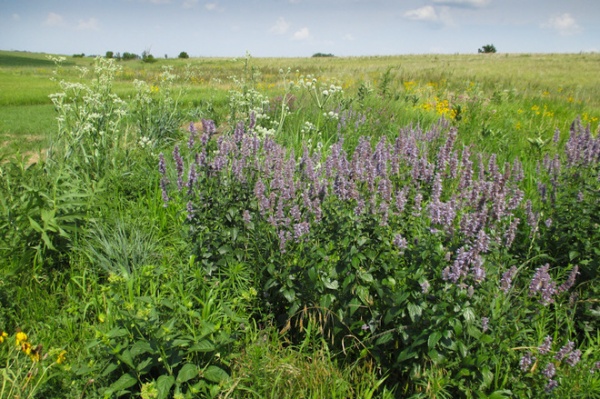
Botanical name: Agastache foeniculum
Common names: Anise hyssop, fragrant hyssop
Origin: Native to the northern portion of North America, including Washington, Montana, Wyoming, Colorado, North Dakota, South Dakota, Nebraska, Minnesota, Iowa, Wisconsin, Michigan, Illinois, Kentucky, Delaware, Pennsylvania, New York and New Hampshire in the United States and all the Canadian provinces except Newfoundland, Nova Scotia and Prince Edward Island
Where it will grow: Hardy to -55 degrees Fahrenheit (USDA zones 1b to 6b; find your zone)
Typical plant communities: Prairies, woodland edges, mountain slopes and old fields
Water requirement: Medium to dry, well-drained soil; sand to clay-loam
Light requirement: Full sun to partial sun
Shown: A cluster of anise hyssop plants growing in a prairie remnant in southern Minnesota
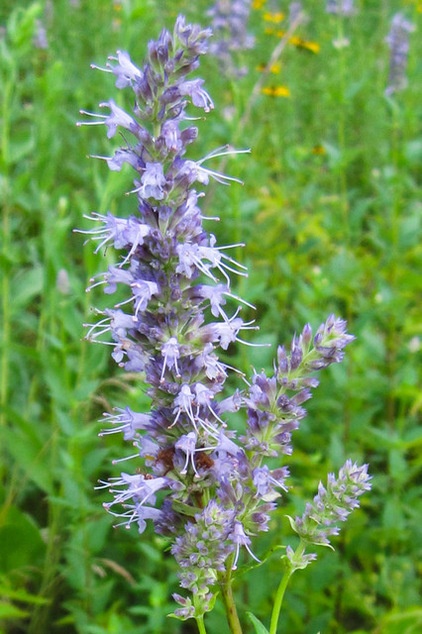
Mature size: 30 to 60 inches tall and 12 to 24 inches wide
Benefits and tolerances: Very drought tolerant; thrives in sand or gravel
Seasonal interest: Starts flowering in late June and continues to flower until the beginning of September
When to plant: Spring or fall
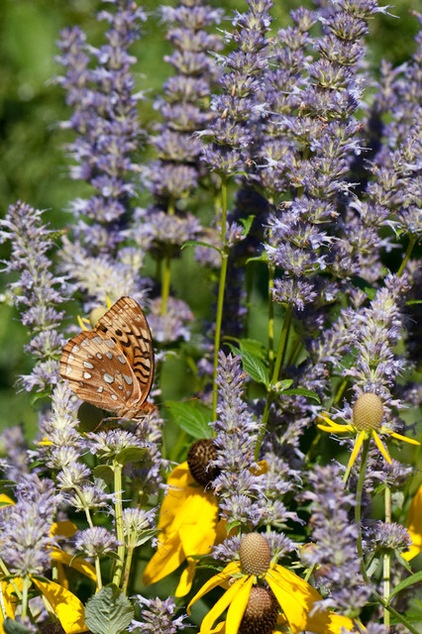
Distinguishing traits. The dark green leaves have an anise scent when crushed or chewed; this scented foliage also helps deter herbivores from browsing the plant. The flower stalks are upright and very sturdy and rarely flop, making this an excellent plant for a traditional perennial border or a prairie-style planting.
How to use it. Anise hyssop is best used in medium to dry locations where no standing water occurs. Use it on hillside plantings, along sidewalks or garden borders, in butterfly or pollinator gardens, or on the dry upper edge of rain gardens. The light blue to lavender flowers are softly textured and combine nicely with yellow- or orange-flowering plants, such as gray-headed coneflower (Ratibida pinnata) and stiff goldenrod (Solidago rigida).
Shown: A great spangled fritillary butterfly
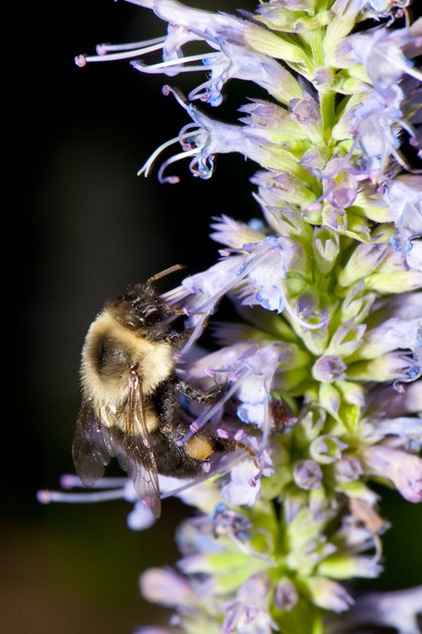
Planting notes. Anise hyssop thrives in loam-rich soils and can reseed prolifically. It produces fewer seedlings in drier sites with sandier soils. Seedlings and mature plants are easy to thin or transplant if they have reseeded where undesired.
It is a plant commonly cultivated by native-plant growers in its range, especially in the upper Midwest and Northeast, and is available in a variety of container sizes.
Shown: A bumblebee forages for nectar on the flowers
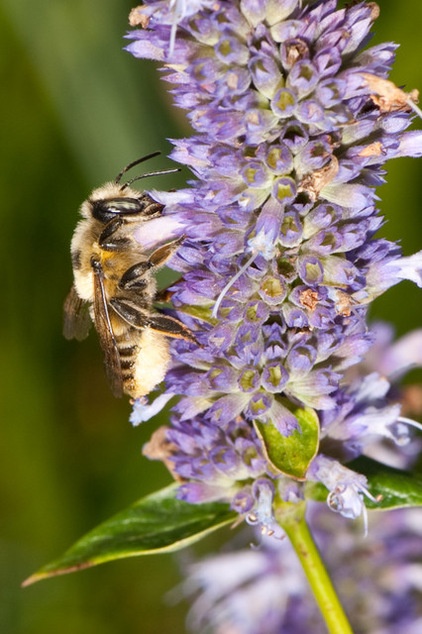
Pollinator notes. Both short- and long-tongued pollinators can access the nectar from the numerous shallow flowers on each spike. Most pollinators visit the flowers to feed on nectar; pollen is deposited on the top of the head or abdomen as the pollinator inserts its head or body into the flower opening.
Shown: A female leafcutter bee (Megachile sp)
More:
Browse plants native to other regions of the U.S.
Attract Hummingbirds and Bees With These Beautiful Summer Flowers
Related Articles Recommended












